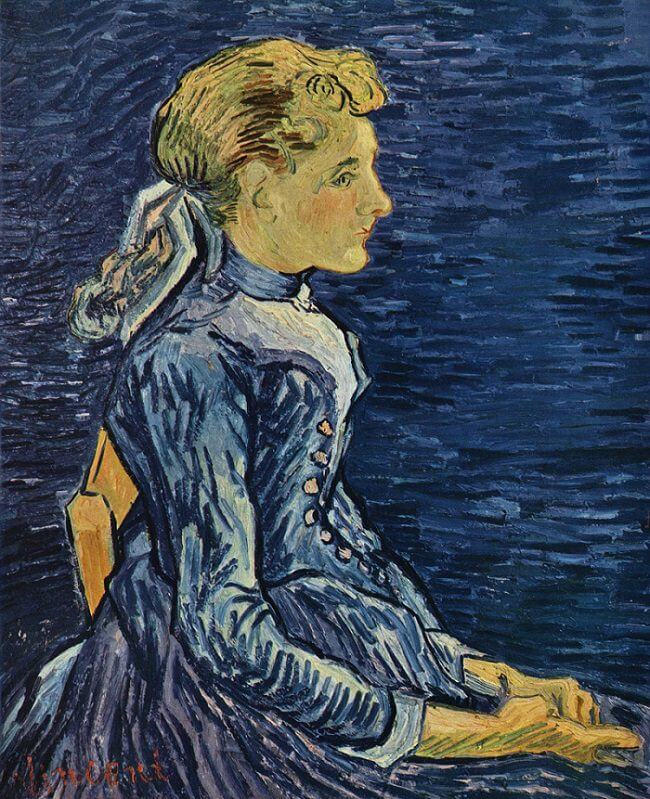Portrait of Adeline Ravoux, 1890 by Vincent van Gogh

The strict profile and simple placing of the shy figure recall the precise, impersonal Italian portraits of the fifteenth century. The drawing here, relatively unimaginative in detail, although it builds up an imposing compact form, is less important than the pervading blue, an ultimate blue of wonderful richness, depth, and jewel-like luminosity, new to the art of the time. This blue has a beauty akin to that of blue stained glass and mosaic, where it is allied with a similar simplicity of form. But unlike these older blues, Van Gogh's is not merely a background color; applied also to the dress and dominating the face (which is doubly submerged - through its pallor and weakened profile], it is the dominant quality, the very idea, of the entire painting, compulsive in its excess and leading us, through its omnipresence and dark intensity, to a mystical, ecstatic mood.
Unfamiliar and imaginative as it is, this blue depends for its final effect on the Impressionist method of vivifying color by the tangible play of touches, which produce a perpetual flicker within this dark recessive tone. The same technique is used in The Abduction by Paul Cezanne, also in Houses of Parliament by Claude Monet. These touches, like mosaic cubes, are patterned material units; each region has its own clear arrangement in contrasting directions that reinforce the major forms as distinct parts of a single darkly glowing whole. The method retains, however, the marks of the hand and its impulse in the free variation of the strokes; and the blue itself is modified in tone by cooler blues on the bodice and sleeve, by violet touches on the skirt. The general vigor of execution, the abrupt breaks of contour, the rugged drawing of the chair and the girl's back, introduce a masculine energy into this ecstasy of endless blue.




















